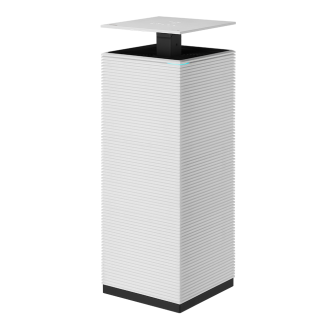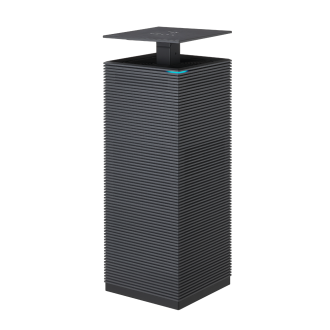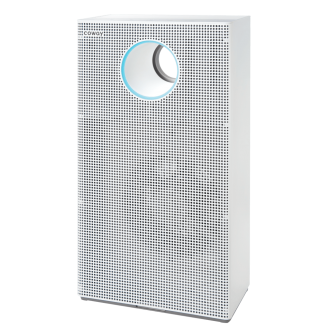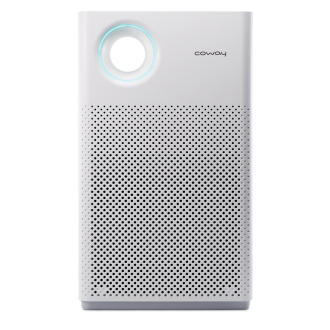There are many types of filters for home, and it can be difficult to know which is best to use. On top of that the same kinds of filters can be seen in different types of systems, ranging from 6-stage whole house water filtration systems to single-filter water pitchers. Let’s take a look at the main types of filters used for home water filtration and some of the systems they can be found in.
Sediment Filters
Sediment filters remove particles in water such as sand, clay, dirt, and rust. The filter medium, which is usually made of materials like paper, ceramics, or various fibers, traps contaminants as water passes through the filter. Sediment filters filter out relatively large contaminants and can reduce turbidity, or cloudiness, in the water. However, they cannot filter out smaller contaminants, and are therefore not recommended as a standalone filter. They can typically be seen as the first filtration step for filtration systems that include carbon filters, reverse osmosis filters, and/or UV light treatment in both POU (point-of-use) and POE (point-of-entry) applications.
Activated Carbon Filters
Carbon filters in water filtration work by adsorption, meaning contaminants in the water stick to carbon particles in the filter as the water passes through the filter. The carbon in the filter can come from various sources, including coal, peat, or coconut shells. Activated carbon filters often come in two forms: granulated activated carbon filters and carbon block filters. Although both forms work by adsorption, carbon block filters have added filtration capabilities. Carbon block filters are made of smaller particles of carbon that are packed tightly together into a “block.” This results in more carbon coming in contact with the water and adsorbing contaminants. Additionally, the tightly packed carbon blocks contaminants that are too large to pass through. Granulated activated carbon filters, sometimes referred to as GAC filters, have grains of carbon and don’t restrict water flow as much as carbon block filters. GAC filters and are therefore more commonly used for water filter pitchers, faucet mounted filters, and refrigerator filters. Carbon block filters are more commonly found as a pre-filter or polishing filters in a larger filter system, such as a reverse osmosis filter system.
Ceramic Filters
Ceramic filters utilize the small pores found in ceramics to filter out bacteria and sediment from water. Ceramic filters are an affordable and often portable option for water filtration. These types of filters can be found in systems ranging from larger under-sink systems and other POU (point-of-use) systems to smaller pitcher filters and other portable filters. Ceramic filters can also be combined with activated carbon to give the added benefit of adsorbing chlorine and VOCs. Additionally, ceramic filters can also be imbedded with silver ions, which help to prevent bacterial growth. Ceramic filters, however, are not able to filter all viruses and are also ineffective when it comes to minerals and dissolved particles (TDS or total dissolved solids)
Ultraviolet (UV) Water Treatment
Although not technically type of filter because it does not capture contaminants, ultraviolet light is often used to purify water. UV purification works by exposing water to an ultraviolet light and therefore killing bacteria and viruses. To work effectively, the water should be free of larger contaminants before being treated with the UV light. Therefore, UV lights are generally used alongside other types of filters towards the end of the filtration process. Some benefits of this type of treatment include it being a chemical free way to purify water while not adding any taste or odor to the water. It is important to note that UV treatment does not remove contaminants that are commonly found in many water sources, and therefore is best utilized only in company with other types of filters. This treatment solution can be found as parts of larger POU (point-of-use) filter systems and POE (point-of entry) filtration systems.
Reverse Osmosis Filters
Reverse osmosis uses pressure to push water through a
semipermeable membrane, a material that has microscopic pores, leaving the
contaminants trapped on one side and purified water on the other. The pores in
a reverse osmosis filter are so small that protozoa, bacteria, viruses, and
chemicals are effectively removed. RO is always combined with sediment and
carbon filters before or after the RO filter to ensure larger contaminants are
removed before going through the reverse osmosis and to polish the water after
reverse osmosis filtration. Reverse osmosis is generally considered as the strongest
type of filtration for home, filtering out the most contaminants. To
effectively do so, reverse osmosis filters require more water pressure than
other filters and needs to discard contaminated wastewater created during the
filtration process. Therefore, reverse osmosis filters are found in larger POU systems and are not found in pitcher filters, fridge filters, or facet-mounted
filters, and are, likewise, rarely used in POE systems.

























